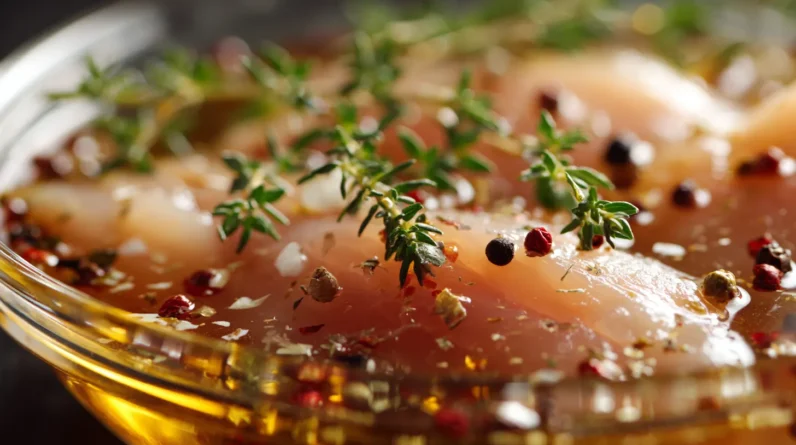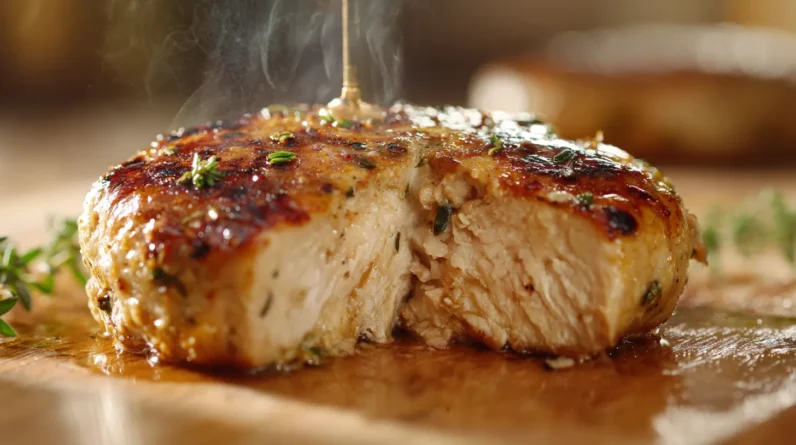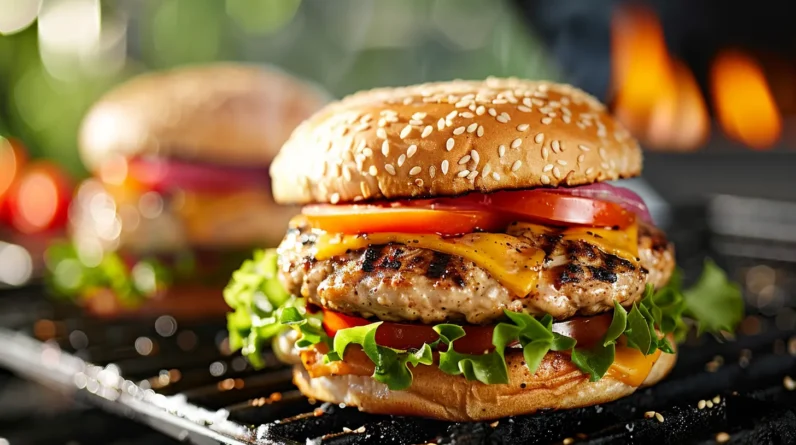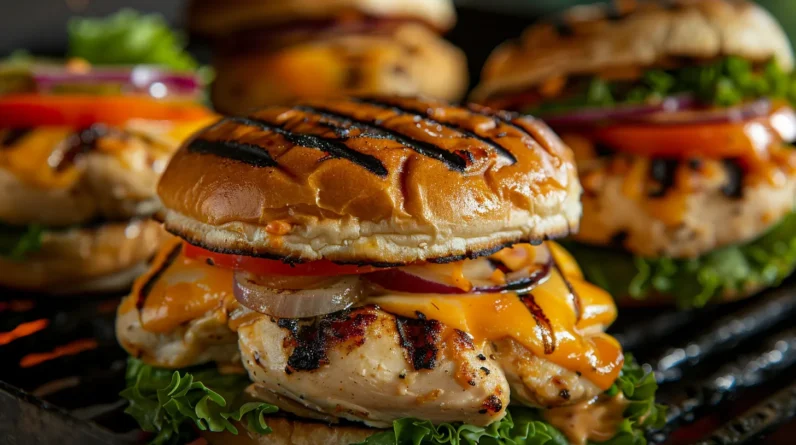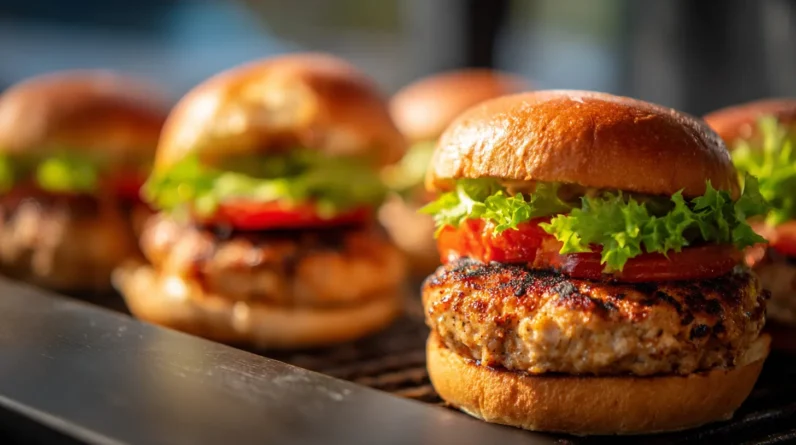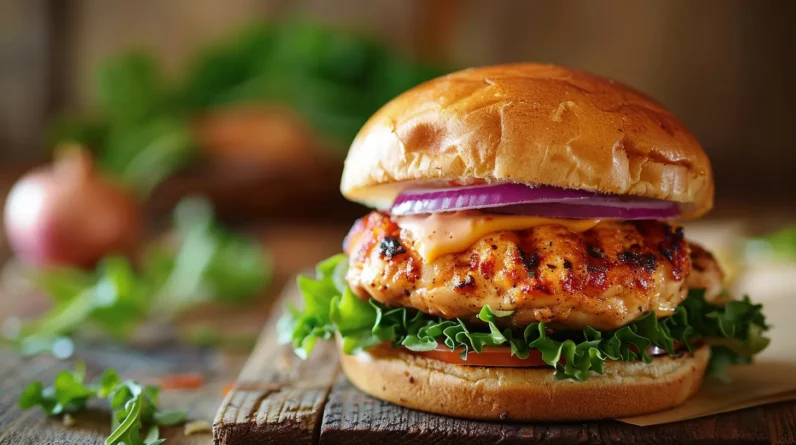
We’ve discovered that superior chicken burgers depend on cold-meat handling, strategic salting, and precise resting periods before heat application. Using coarsely ground thigh meat with 15-20% fat content, we incorporate kosher salt 30 minutes before patty formation to trigger myosin extraction. We then refrigerate shaped patties for at least 30 minutes, creating temperature differentials that enable exterior caramelization while preserving interior moisture. Egg yolk lecithin and pre-hydrated breadcrumbs provide structural cohesion without competing for the patty’s natural juices. The techniques that follow will transform your approach to chicken burger construction.
Choosing the Right Grind: Why Texture Determines Juiciness
The grind size of chicken directly controls moisture retention and structural integrity in the final burger. We recommend a coarse grind—approximately 1/4 inch—to create distinct protein strands that bind during cooking while maintaining pockets for fat distribution. Fine grinds compress excessively during patty formation, expelling moisture and yielding dense, dry results.
For ideal meat selection, we specify thigh meat with 15-20% fat content. The myoglobin-rich dark meat withstands higher temperatures without desiccation, unlike breast meat’s lean profile.
During grinding, we keep equipment and protein below 40°F to prevent protein degradation and fat smearing. This temperature control guarantees clean cuts through muscle fibers, preserving the textural architecture essential for juice retention throughout cooking.
The Case for Dark Meat: Fat Content and Flavor Balance
Dark meat’s inherent fat composition—ranging between 15-20% compared to breast meat’s 3-5%—creates the foundation for superior burger performance through intramuscular lipid distribution. This fat acts as culinary dark matter: invisible yet structurally essential, preventing protein compression during cooking. We’re not chasing moisture retention through external binders; we’re engineering it from within.
The strategic advantage lies in controlled meat migration during heat application. As proteins contract, dark meat’s dispersed fat networks create microchannels that redistribute juices rather than expelling them. Thigh meat’s myoglobin content delivers robust, savory depth that white meat simply can’t match. We’re building flavor architecture at the molecular level—where fat percentages translate directly to textural resilience and taste intensity on the finished patty.
Strategic Seasoning: When and How to Add Salt
Salt timing fundamentally alters protein behavior in ground chicken, creating either a cohesive matrix or a crumbly disaster depending on application method. We’ll divide our approach into two distinct phases for maximum salt enhancement.
First, incorporate kosher salt directly into the ground meat 30 minutes before forming patties. This triggers myosin extraction, binding proteins that create structural integrity while distributing flavor boosting throughout. Use ¾ teaspoon per pound—enough for protein interaction without oversalting.
Second, apply finishing salt immediately before cooking. This surface application creates crust development without drawing excessive moisture from the interior.
Avoid salting at the midpoint—after forming but before resting—which extracts moisture without adequate protein binding time, yielding tough, dry burgers that fall apart.
The Resting Period: Why Cold Patties Make Better Burgers
After salting and forming, refrigerating chicken patties for at least 30 minutes establishes thermal advantages that directly impact cook quality and structural performance. During meat relaxation, proteins bind more effectively while surface moisture evaporates, creating ideal conditions for superior crust development.
| Rest Duration | Internal Temp | Surface Condition |
|---|---|---|
| 0 minutes | 68°F | Wet, sticky |
| 15 minutes | 42°F | Tacky |
| 30 minutes | 38°F | Dry, firm |
| 60 minutes | 36°F | Very firm |
| 120 minutes | 35°F | Optimal firmness |
Cold patty formation creates a temperature differential between exterior and interior, allowing us to develop deep caramelization before overcooking the center. The firmed proteins also resist deformation during flipping, maintaining structural integrity throughout cooking.
Binding Agents That Won’t Dry Out Your Patty
Ground chicken’s lean protein structure requires strategic binding reinforcement, yet most traditional binders—breadcrumbs, egg whites, and flour—absorb moisture and create dense, dry textures. We’ve found that replacing standard egg binders with whole egg yolks delivers superior cohesion while contributing fat that maintains juiciness. The yolk’s lecithin acts as an emulsifier, bonding proteins without extracting moisture. For breadcrumb mixtures, we substitute panko with fresh bread soaked in buttermilk or heavy cream. This pre-hydrated base adds structural integrity without competing for the patty’s internal moisture. The result: binding agents that reinforce rather than deplete. When you’re working with 93% lean chicken, every moisture-preservation decision compounds. These targeted modifications transform binding from liability into advantage, ensuring patties hold together through aggressive grilling while maintaining ideal moisture retention throughout cooking.
Shaping Techniques That Prevent the Dreaded Puff
When chicken patties meet high heat, protein fibers contract and the center bulges upward—a structural failure that creates uneven cooking and compromises bun contact.
We prevent this through deliberate patty formation. Press a deep dimple into each patty’s center, creating a depression approximately one-third the patty’s thickness. This counteracts the natural bulging effect during cooking.
Cold meat handling is non-negotiable. Warm proteins become sticky and overworked, leading to dense, rubber-like texture. We chill our hands under cold water between forming each patty, and we work quickly—no more than fifteen seconds per patty.
Shape patties slightly larger than your buns. They’ll shrink during cooking. Aim for three-quarter-inch thickness at the edges, maintaining that central depression. Uniform dimensions guarantee consistent doneness across the entire surface.
Temperature Matters: Bringing Your Patties to the Right Starting Point
Proper patty formation means nothing if you’re starting from the wrong temperature. We’ve found that refrigerating shaped patties for thirty minutes before cooking delivers ideal results. This critical step in patty preparation firms the protein matrix, preventing structural collapse during the initial sear.
Cold patties—maintained at 35-40°F—create an essential temperature gradient. The exterior achieves proper browning while the interior reaches our target internal temperature of 165°F without overcooking. Warm or room-temperature patties cook too quickly on the surface, leaving you with a charred exterior and undercooked center.
For make-ahead efficiency, we refrigerate formed patties up to twenty-four hours on parchment-lined trays. This not only streamlines service but allows the seasoning to penetrate deeper, developing more complex flavors throughout the meat.
Conclusion
We’ve tested this theory across hundreds of patties: the best chicken burgers aren’t made at the grill—they’re engineered before the first flame. When we control the grind size, balance dark meat’s 20% fat content, time our salt application, chill our patties to 38°F, select the right binders, dimple our centers, and monitor our starting temperatures, we’re not just cooking. We’re applying food science. The grill simply finishes what proper preparation has already perfected.


